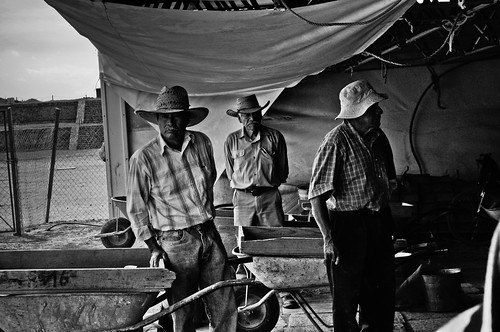In the mouth of Quetzalcoatl
May 18, 2013
by Rodrigo Pacheco-Ruiz
Going back to Teotihuacan for me is like travelling back in time. ‘In the mouth of Quetzalcoatl’ shows a snapshot of how Mexican archaeology is and has been in the last decades. It shows the wrinkles of time through the people and places involved in understanding a disappeared past. The history of Mexican archaeology is still strikingly visual and it is present through the actors and sceneries of every day’s life.
This shot taken in March 2013, not only freezes the essence of a country’s curiosity to learn more about its people, it also throws me back in time. This was the place where I started my career as an archaeologist, more than ten years ago and it is linked to a rather curious story.
Teotihuacan is known to be the largest and most important prehistoric city in America, extending some 83 square kilometres in the Teotihuacan valley. The ancient city is also known to be the number one place for archaeological testing grounds. From excavations with dynamite in the late 19th Century, to state of the art research today – Teotihuacan has seen it all. My story nevertheless, is the combination of human curiosity, ingenuity and recklessness.
The city is one of the earliest examples of prehistoric urbanism in the continent and it is organised along two main large roads, one oriented north south and the other east west. Each barrio, or cluster of buildings, presents a large courtyard, surrounded by four temples, one at each cardinal point. Whilst excavating one of the small complexes, the perfect test bed for novice students, a rumour reached us.
Archaeologists working at the largest and most important courtyard complex, found a collapsed slate at courtyard level. This uncovered an old vertical shaft of roughly a metre in diameter, which dropped twenty metres to the heart of the earth. The rumour was exciting for every one, until we heard the rest of the message. Someone was trying to strap a child to a rope and lower him down to report back what he found there, in the underworld.
This created a wave of alarmed whispers that echoed along the trench we were working on. Despite everybody’s clear outrage, the only souls in complete silence were the students. I don’t know if this was because they couldn’t believe what they were listening or they were just remaining as inconspicuous as possible, in case they turn to be a suitable candidate for the task. Personally I couldn’t believe what was happening.
Later in the evening, we met the archaeologists in the main restaurant. After a few tequilas, I took courage to inform the main archaeologist in charge of this stupid idea, the way I thought about his approach. This was nevertheless easier to think than to say, so we started talking about the incredible find and what it could represent for Mexican archaeology. I then received a very kind invitation to visit the site the next day.
I found myself at 10:00 in the morning looking down this very dark hole in the ground, strapped around an old piece of rope, descending very slowly down the mouth of Quetzalcoatl. At this point I didn’t know what thought was more powerful in my head, the fact that I was probably the first person to be there in more than two thousand years, or my mother’s idea that I finally had lost my mind completely.
Today Quetzalcoatl temple project is one of the most important archaeological projects in Mexico and although no more human testing is done it keeps producing generations of archaeologists. After more than eight hundred tons of meticulously excavated soil, more than thousands of objects recovered and eleven years of excavations, the heart of the temple has not yet been reached.
Categories: PGRAS 2013.

